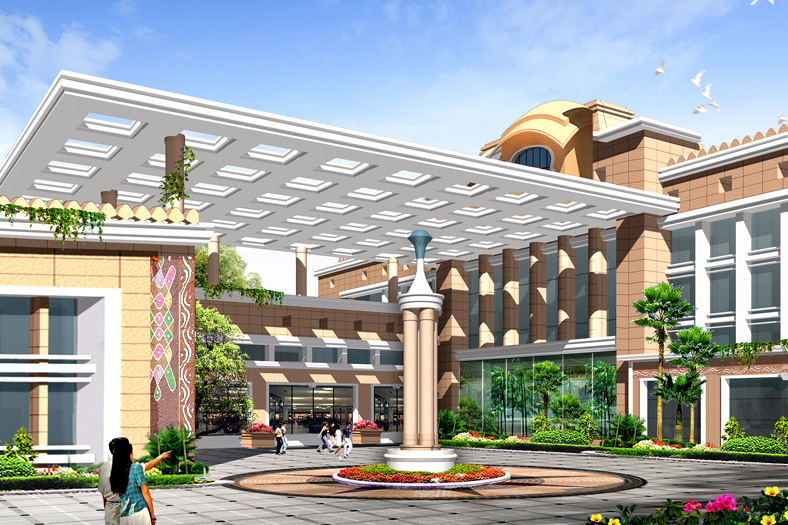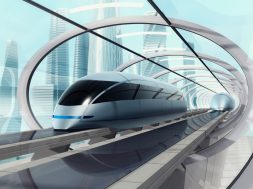Celebrating diversity which is Incredibly Indian

When we speak about diversity subconsciously we limit it to social and cultural interactions alone. But the mechanism of a diverse thought process impacts the larger schemes of our existence which includes infrastructure, architecture and design.
India has always been considered as one of the culturally diverse nations, a diversity which has infused itself in every walk of our life. This diversity alone is also one of the major reasons which allow us to be intensely democratic in our thoughts and actions. It is perhaps this diversity which allows a Telangana based company like GVK to execute a hallmark project like T2 Terminal at the Chattrapati Shivaji Maharaj International Airport in Mumbai, Gujarat based Patel Infra to enable seamless connectivity in Punjab and Mumbai based Shapoorji and Pallonji Engineering & Construction company to create a sports venue in the hilly areas of Uttarakhand.
Using new age technologies of engineering and construction India has witnessed developments in the infrastructure, transportation and allied areas which includes roads, bridges, highways, airports, monorail and the metro. From the cantilever bridge in Howrah to the cable-stayed Bandra–Worli Sea Link in Mumbai, from the Kolkata Metro which initiated operations in 1984 to Mumbai Metro which commenced operations in 2014; the changes in the infrastructure and transportation segments have been constant and they have consistently redefined our collective identity as Indians. As time goes by we consistently remain open to embrace emerging technologies to create landmarks which are incredibly Indian.
While we are witnessing the dance of democracy in the technological sense, what is Indian architecture up to? Are we in the danger of losing our identity? Indian architecture is itself is so profound, that it has made itself visible along the length and the breadth of the country. Not only has it evoked an element of interest in the West but we as Indians too continue to remain in awe of the architectural marvels it has given rise to.
The successive kingdoms which governed India left their traces in the built environment, some remain and some were lost in the sands of time. The era of successive monarchs made Indiamulti-ethnic in nature. This ethnicity has made quite an impact in form, function and architecture of India. So much so more that the idea of Indian architecture remains open to debate.
Ranjeet Mukherjee, Principal Architect, The Vrindavan Project points out “To define an ‘Indian’ architecture under any integrated descriptive umbrella would be a narrow simplification to say the least. Contextually appropriate architectural responses to any given site condition would be best defined by a responsible use of locally available, naturally occurring resources; while incorporating traditional wisdom of local craftsmanship and artisans at every level of design.”
Apart from contextual realities Indian architecture has also played an important role in community building. Shilpa Jain Balavally, Principal Architect, Studio Osmosis points out “Indian architecture has always been about responsiveness to the Indian family lifestyle and way of living and culture, the climate and varied geography across the states, surroundings, materials and cost as well as use of the local skilled work. This being the guideline and also being sensitive to the art and culture as well as the celebration of life in India”.
Architecture is a time-bound exercise. It can be argued that the new technologies and construction methods addresses the growing needs of the nation in a time bound manner. Something that tenets of Indian architecture may not be able to keep up with, however Himanshu Patel, Principal Architect, d6thD design studio “Majority of India has been built using natural materials such as mud, brick, wood, stone, bamboo, lime. Most of us do not know these materials have been used in India since our textbooks do not cover these aspects. Hence, we use steel, glass, concrete etc., since they are being used worldwide or because the manufacturers want us to do so.”
Patel says that our urban areas are blindly following the western language of office-building and there is a lot we can learn from countries like Japan and Sri Lanka. Japan and Sri Lanka are two prime examples of countries that have their distinct style of work. “Japan’s sensitivity to minimalistic, austere architecture, use of tatami mats and Zen gardens reflect their philosophy. As for Sri Lankan architecture, it is a true response to their warm and humid tropical climate.”
Even though the onset of globalisation has altered the way architects put their expertise to work, the essence of Indian architecture will continue to guide the path for many architects. Prem Nath & Associates. Prem Nath, Principle Architect, Prem Nath & Associates points out “One may say there has been a bit of identity crisis in the overall real estate industry, however there have been many architectural practices, including ours, which have remained unfazed by such waves of trends and have always followed the simple and basic principles of planning – and what better than to follow Indian principals of planning which have always been ahead of time and sustainable.”
The identity of Indian architecture will continue to be debated, not because it is unique but because it is a huge volume of efficient practices derived under the rule of each successive monarch who catapulted India to fame. In this scenario Architect Dikshu C Kukreja Managing Principal, CP Kukreja Architects, New Delhi has the last word “Perhaps it is time for us to abandon the argument of defining what is “Indian”, learn to embrace our past as an integral part of who we are, and look to the future as we continue on this journey of evolution and re-evolution. To me, the future of Indian architecture is not about imbibing an identity that is only skin deep. It is about architecture that is sensitive to the needs of its context- social, political, economic, and geographic. It is about creating a meaningful dialogue between the tangible and intangible aspects of the built form, and giving up superfluity for spaces that have a true impact on its surroundings.”
“To define an ‘Indian’ architecture under any integrated descriptive umbrella would be a narrow simplification to say the least.”
Ranjeet Mukherjee, Principal Architect, The Vrindavan Project
‘“Indian architecture has always been about responsiveness to the Indian family lifestyle and way of living and culture.”
Shilpa Jain Balavally, Principal Architect, Studio Osmosis
“Majority of India has been built using natural materials such as mud, brick, wood, stone, bamboo, lime.”
Himanshu Patel, Principal Architect, d6thD design studio
“One may say there has been a bit of identity crisis in the overall real estate industry, however there have been many architectural practices, including ours, which have remained unfazed by such waves of trends.”
Prem Nath, Principle Architect, Prem Nath & Associates
“Perhaps it is time for us to abandon the argument of defining what is “Indian”, learn to embrace our past as an integral part of who we are.”
Ar. Dikshu C Kukreja, Managing Principal, CP Kukreja Architects
Cookie Consent
We use cookies to personalize your experience. By continuing to visit this website you agree to our Terms & Conditions, Privacy Policy and Cookie Policy.









